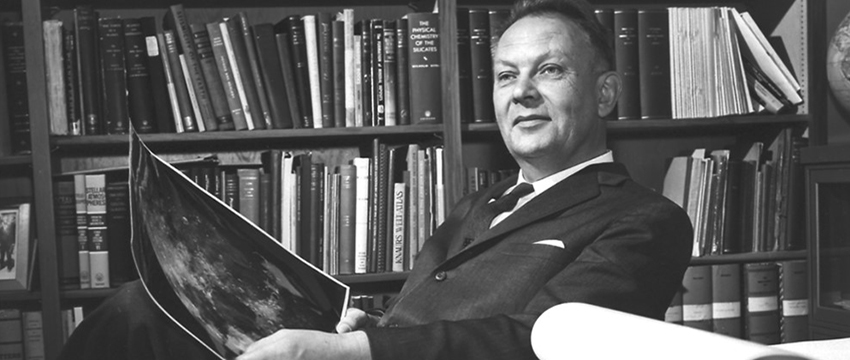
Press Release, UA Communications - June 5, 2019
On July 20, 1969, the first humans stepped onto the moon completing a feat that would not have been possible without the groundbreaking research and lunar mapping projects undertaken at the University of Arizona's Lunar and Planetary Laboratory.
When Gerard P. Kuiper founded the laboratory nine years earlier, in 1960, there was skepticism and a lack of interest in humans visiting the moon. But reaching the moon became a priority as the space race ramped up in the early '60s. Kuiper and his UA laboratory was suddenly in demand.
Almost nothing was known about the lunar surface at that time. For example, some feared the astronauts' lander would be swallowed up by bottomless layers of dust.
Now, on the 50th anniversary of the first manned mission to the moon marked by the Apollo 11 landing, UA scientists celebrate the pioneering and pivotal role the UA has held in the explosion of space science research, helping to shape what we know about our solar system and beyond.
"The UA has been a part of nearly every NASA planetary exploration mission, and with leadership roles on many of them," said Tim Swindle, director of the UA Department of Planetary Sciences and the Lunar and Planetary Laboratory, or LPL. "Our graduates and alumni have also been involved in many missions. That is our goal."
William K. Hartmann, a UA alumnus who studied with Kuiper, was instrumental in helping to create some of the first maps of the moon.
"We projected photos of the moon onto a white globe, then photographed the globe from different angles to make an atlas of lunar features from overhead, as they would be seen by astronauts orbiting the moon," Hartmann said.
He also shaped early theories around the origins of Earth's moon and has made other significant contributions to the field of lunar science.
Over the course of his scientific career, Hartmann discovered several impact basins on the moon. During the 1960s, he predicted the age of the lunar lava plains. His predictions were confirmed through samples returned by the Apollo missions.
The Apollo missions also influenced Kuiper while at the UA. He took his students on field trips to places on Earth that he felt were representative of what students might see on the moon or in the solar system, such as Meteor Crater in northern Arizona, dune fields or the extensive lava flows blanketing the Big Island of Hawaii. Those types of instructive field trips continue today.
"During our field trips, students visit planetary analog sites," Swindle said. "It's an important part of our department culture. We can send a robotic spacecraft to places in our solar system and beyond, but we'll never be able to see them as well as we can see places on Earth," he explained. "By comparing those sites using every scientific technique we can think of, we can learn what those places out there in space might be like."

